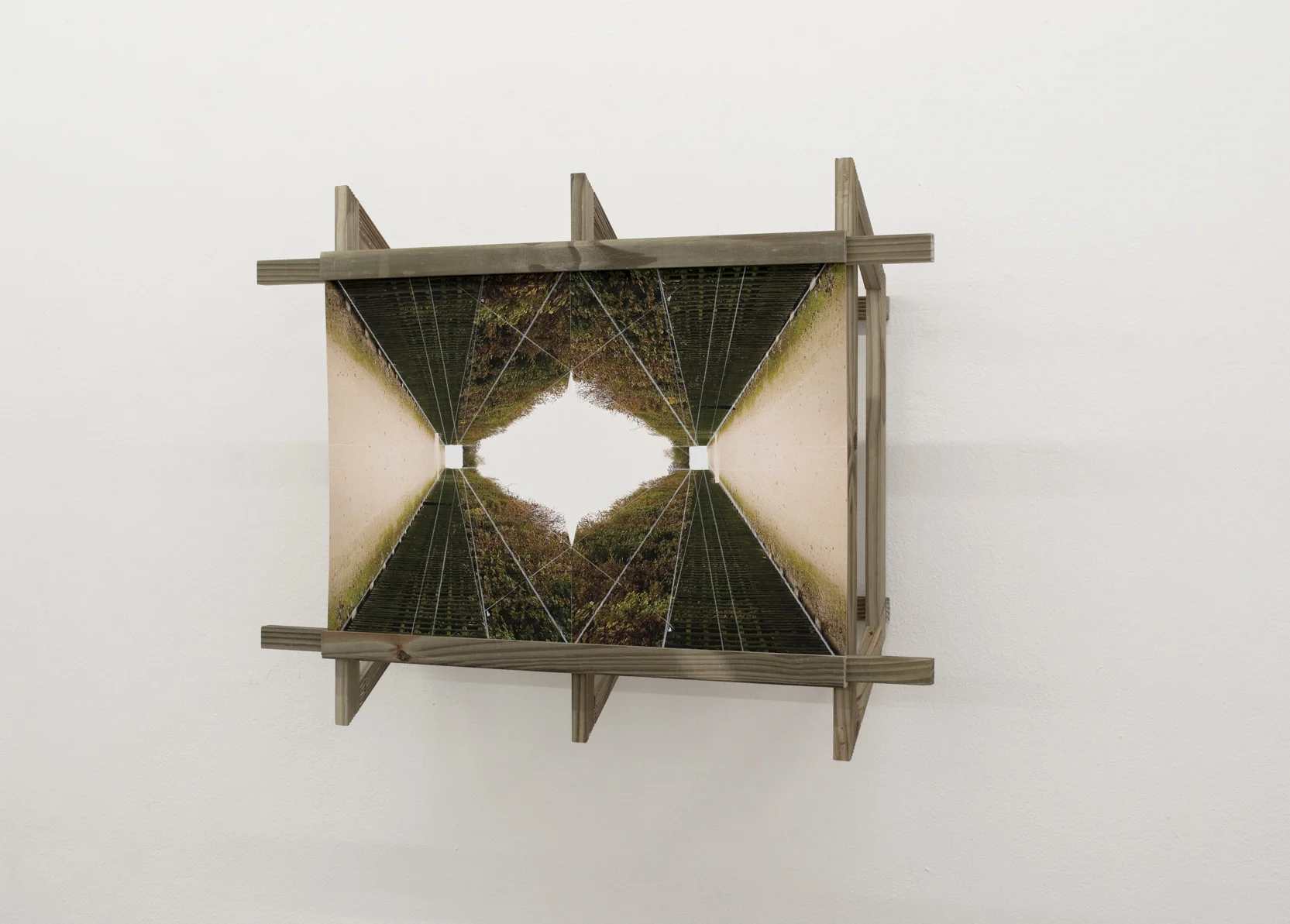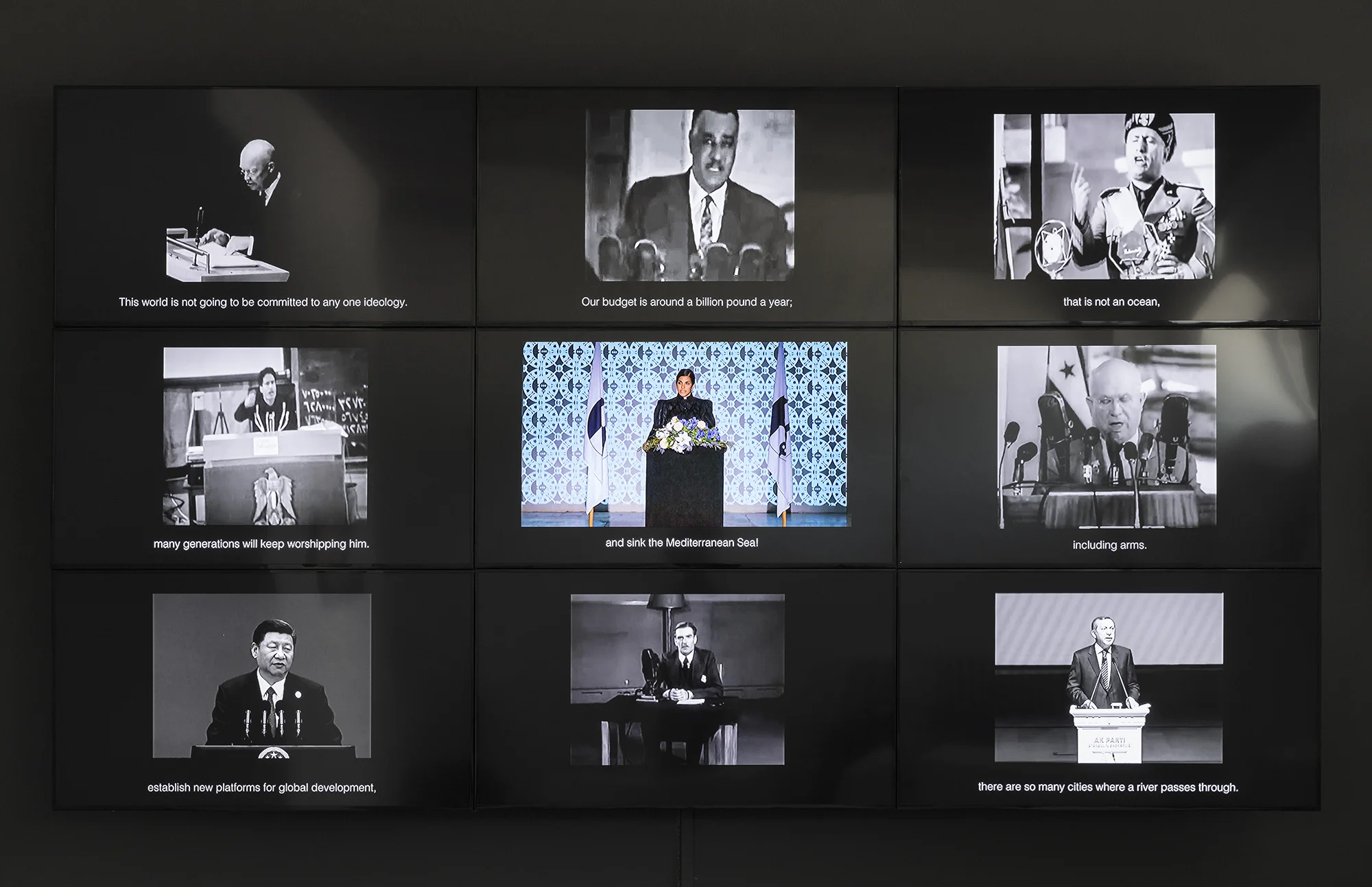Crossing Continents: Art Dubai 2019
This feature was commissioned and published in Shawati Magazine Issue 45
Farid Rasulov, Kangaroo. Image courtesy of Sanatorium Gallery.
Audiences in attendance at the 13th edition of Art Dubai in March 2019, were privy to the first performance art programme that the fair has ever hosted. It marked the start of new leadership for the art fair, which has evolved into something of an institution over the past decade and is now being directed by a dual team: Pablo Del Val and Chloe Vaitsou. As part of the newly formed programme of performances, a Trinidadian artist called Marlon Griffith collaborated with 150 members of Dubai’s extensive Filipino community to present his take on a carnival of West African shadow puppets to highlight several aspects of Dubai’s recent history. Loud, colourful and a fusion of cultures, traditions and visuals, the carnival is part of the elevated atmosphere that infuses the art fair, which takes place in Dubai’s Madinat Jumeirah’s conference halls.
Curated by João Mourão and Luís Silva of Kunsthalle Lissabon – a contemporary art platform from Lisbon, Portugal - the Griffith performance, titled A Walk into the Night has a double purpose: to seduce audiences into participation, even if just as spectators as well as asking them to question the world in which we live. The two Portuguese curators who celebrated their tenth anniversary by participating with Art Dubai in a series of global satellite projects, also brought Samson Young – a Hong-Kong artist – to present Muted Situation #2: Muted Lion Dance. This is a take on the traditional Chinese lion dance, where performers mimic a lion’s movements to bring luck and fortune, but instead of real percussion, the sound will be coming from the movement of the dancers.
The two pieces are very different but both celebrate unity and togetherness, which is a topic that is an undercurrent for the entire event. “The leifmotif running throughout the fair is the perception of the other,” says Pablo Del Val, Art Dubai’s international director. “Everything is going to be talking about identity in a global world and questioning how we keep our identity whilst living with different cultures as well as embracing others and creating encounters and conversations.”
Marcelo Moscheta, Suite Versailles, 2018. Moscheta’s was one of 12 solo presentations chosen for Bawabba at Art Dubai 2019. Image courtesy of Vermelho Gallery.
A key part of this is making sure that the region known as the Global South is represented. Global South is a term that encompasses South Asia, Africa, the Middle East and Latin America and despite being such a vast region, it is barely represented at all at Western art fairs. Hence the need, says Del Val, to “present discourse and dialogue that allows all these disparate voices to be heard”.
The inaugural Bawwaba section of the fair is an example of just that. Bawwaba, which means gateway in Arabic, consists of 10 solo exhibitions placed alongside each other in a narrative fashion. Curated by Élise Atangana, a French Cameroonian, each project will be presented in a row of connected yet distinct booths, which address the notion of passage of time. The artists also interrogate the notion of Global South, which resonates deeply with formerly colonised countries, meaning that narratives found here are historical and political as well as intimate and personal. A highlight of this section are Pakistani-British artist Shezad Dawood’s paintings from his new Encroachments series as well as Istanbul-based Gozde Ilkin who makes work out of repurposed domestic fabrics such as table cloths, curtains and bed duvets.
Bawwaba’s galleries are housed inside the art fair’s primary halls, whose main feature is 47 contemporary galleries showing a mix of emerging and established artists from around the world. Galerie MAM, the oldest gallery in Africa and located in Douala in south west Cameroon are presenting a series of emotive works giving insights into daily life in the country. First time exhibitor, Akar Prakar, which is one of the leading galleries and promoters of Indian art today are showing Ganesh Pyne’s rare early works, as well as new pieces by Ganesh Haloi, one of India’s most established abstract artists. Denmark’s Andersens gallery will also be bringing leading Argentinian sculptor Tomás Saraceno to the Middle East for the first time and Dubai’s Green Art Gallery are showing the work of American Kathryn Ryan. Germany’s Zilberman Gallery will have an entire booth dedicated to Berlin Biennale artist Heba Y. Amin.
Heba Y. Amin - Operation Sunken Sea, The Anti Control Room. Courtesy of Zilberman Gallery.
However, rather than presenting gallery booths as a series of mini exhibitions, the directors want the event to be an educational experience as well as, in some instances, a history lesson.
The newly renovated Modern section, for example, aims to contextualise the historical significance of art from the 20th century. The 11 galleries here bring classic pieces as well as archival material and a two-day symposium, where talks and lectures about artistic production in the Middle East, North Africa, and the Indian subcontinent, helps audiences to understand themes and concepts of the art being showcased. In this section, Dhoomimal, India’s first art gallery are in attendance as well as Gallery One from Ramallah and Hafez Gallery, showing leading Saudi modernists. The African continent is also well represented.
“Whether from the past, present, future and across all nations of the Global South, every section is related to each other, pushing energies from these certain geographies and leading towards a cohesive visitor experience,” says Del Val.
Finally, the intellectual arm of the fair, is taking place in Mina A-Salaam, the adjacent hotel. Here the Global Art Forum, which is a series of talks and lectures centred around one theme, attracts the region’s leading thinkers. The title of the 2019 edition is School is a Factory and asks: What should education prioritise in the coming decade? How should humans be taught in the age of accelerated mechanisation? And even more radical questions such as: Will we need humans to teach humans anymore?
Inside this section, the second annual edition of Residents also takes place. This is a 6-8 week programme leading up to the fair, where 12 top artists from Latin America were invited to the UAE to create work to be exhibited. Rounding off this section is an exhibition of work by grass-roots initiatives across the UAE. UAE NOW is exciting because it gives a voice to the underground. “This is putting the spotlight on a new generation of youngsters and really tapping into the pulse of the nation, who represent the future of the UAE society,” says Del Val. “In the same way that the fair is giving a voice to the underrepresented Global South, this section will show visitors what the UAE really is in terms of art and production.”



